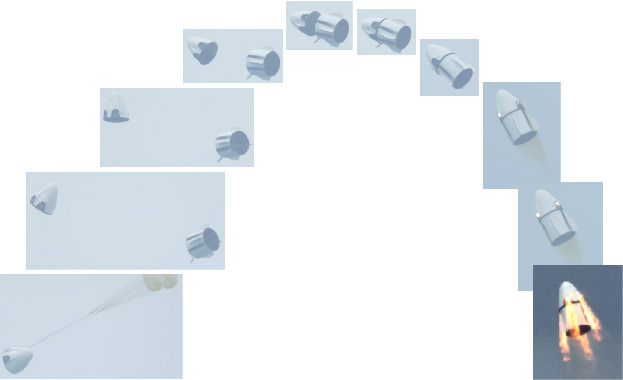Last week, SpaceX conducted a successful pad abort test of its innovative Crew Dragon spacecraft. Powered by hypergolic monomethylhydrazine CH3(NH)NH2 fuel and nitrogen tetroxide N2O2 oxidizer, which ignite on contact, the Super Draco engines accelerated Dragon from 0 to 100 mph in 1.2 seconds — that’s faster than a Tesla (the electric cars made by Elon Musk’s other company)! The Super Draco’s can be deeply throttled to modulate acceleration, including deceleration, and SpaceX intends to eventually use them for pinpoint propulsive landings on Earth and, in the Red Dragon version, on Mars.
Rocket engines experience “fire and ice”, extreme temperatures separated by millimeters, and they must be manufactured to extreme precision. So SpaceX 3D printed (the combustion chambers of) the Super Dracos.

Cool physics alert: Near apogee, the Crew Dragon separated from its finned trunk and inverted for parachute deployment. I suspect the inversion was largely or completely passive. Stability depends on the relation between the CP and the CM: the CP is the Center of Pressure or effective application point of aerodynamic forces integrated over the vehicle; the CM is the Center of Mass, about which the vehicle rotates for observers translating with it. With the trunk attached, the Dragon’s CP was likely aft of its CM, like a dart, so the Dragon was stable with respect to small changes in angle of attack; however, without the trunk, the Dragon’s CP was likely forward of its CM, so it was unstable and inevitably and passively inverted — exactly as planned!

Thanks, Mark! I enjoy reading your posts as well.